A-team - first week
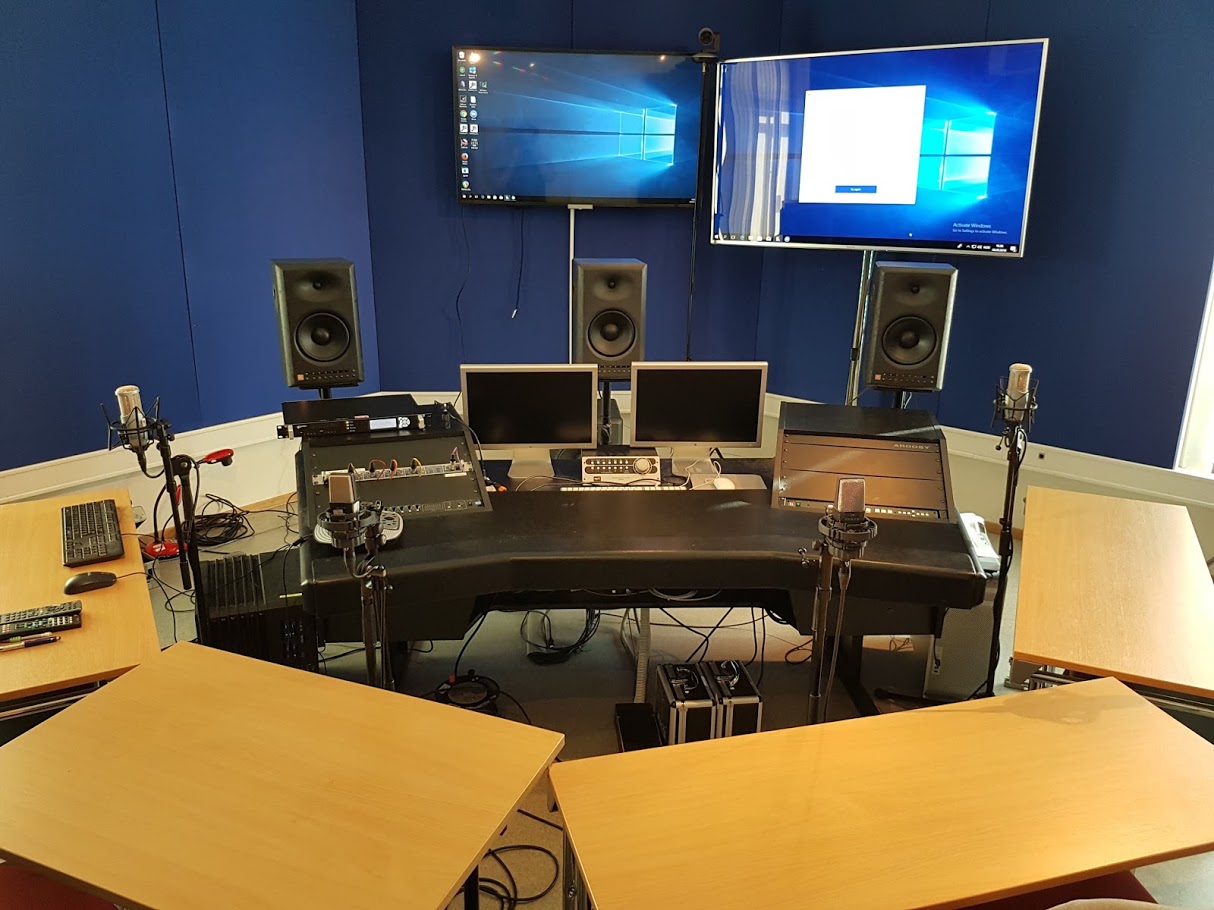
A-team, Opening week of MCT
The first week at The Portal was interesting. Most of the equipment was not ready for use, and the TICO system network card crashed two days before opening ceremony.
Our group, Jørgen, Espen, Sam and Juno, started working on Monday 27. August, and tried to set up the Polycom system as a backup for the week in the Portal.
Polycom is a video conference system
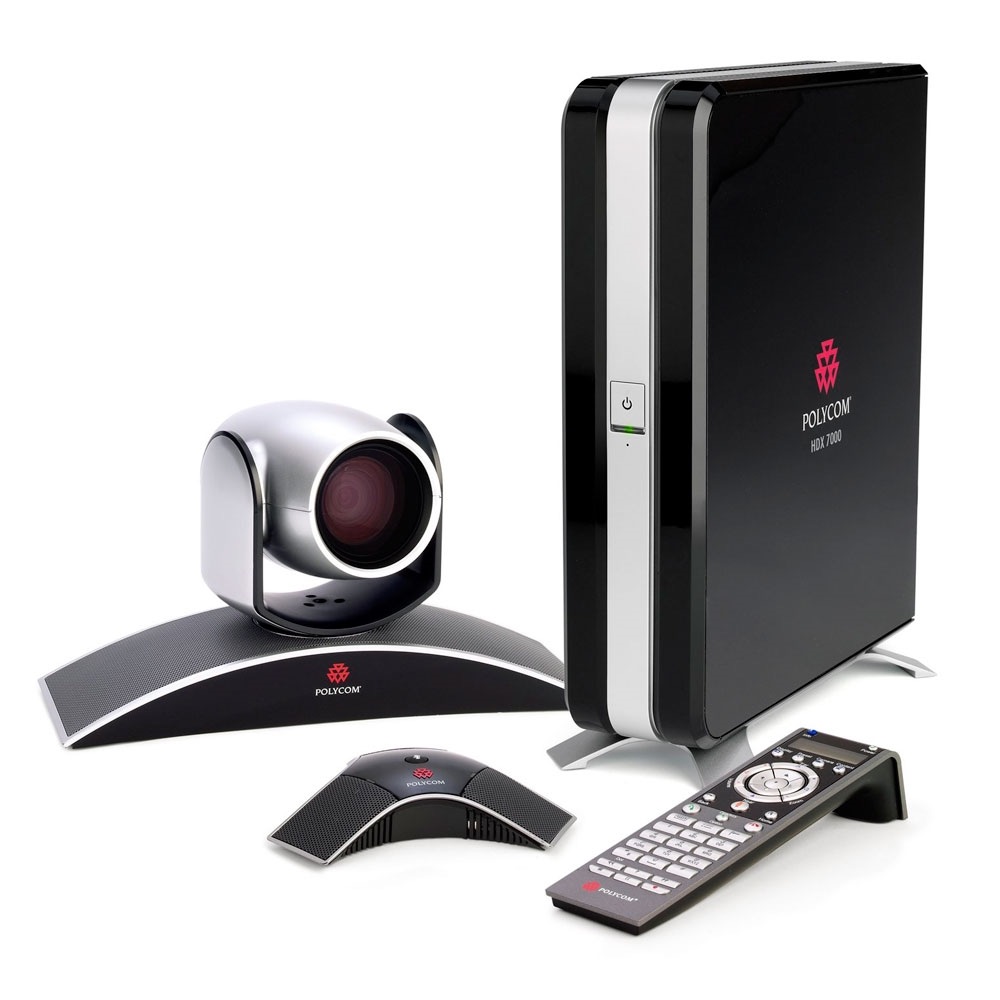
A-team, Week 36
Setting up the temporary portal
- A brief summary
In order to set up the sound system in the temporary portal room back in Trondheim, we (Jørgen and Sepehr) used 4 microphones (Cardioid polar pattern) to capture the sound of the people; each capturing approximately 2 people, sitting on a table (we had 4 tables in the room). The signal went to the Mixer we had up and running via 4 separate channels. After that the signal traveled from 2 outputs (left and right) of the mixer to the left and right input of the sound card, of the main computer in the temporary portal room.

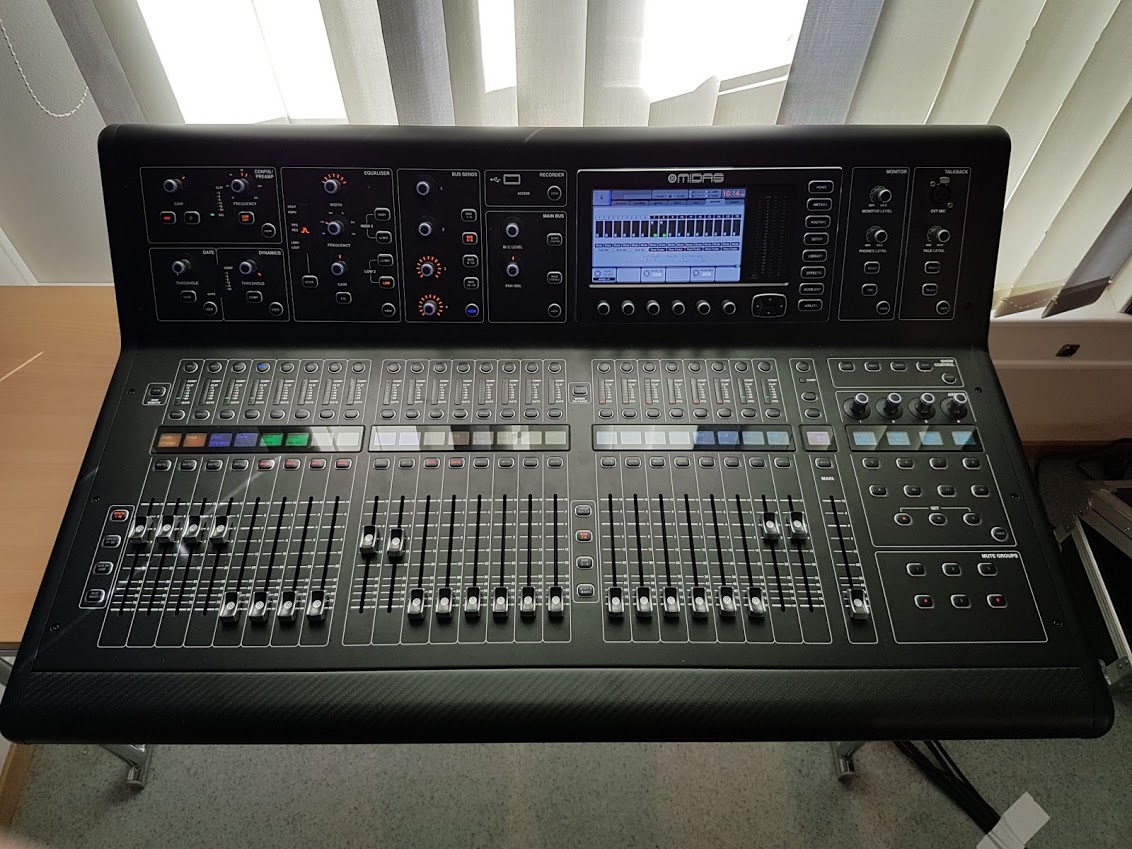
Also the sound received from Oslo portal room was being sent to the speaker via output 1 and 2 of the main computer’s sound card. No need to mention that the program used for the communication was Zoom which Inside its setting one can assign the inputs and outputs for the communication.
Regarding the video we managed to raise the camera, therefore we could have a wider picture and avoid people being blocked by objects, such as speakers.
Detailed information are being presented in the table below:
Challenges and solutions:
| Challenge | Solution | Reflections | |
|---|---|---|---|
| 1. | Fit 7 students and a teacher into the picture | Raised the camera (bird view) and placed 4 tables in a half circle | Everybody is seen, and gets equal priority. The teacher does not have a dedicated place, but until now the teachers has naturaly placed themselves by the computer, so they can have control over Zoom and their presentation. We think this solution made it more comfortable for the students placed nearest to the big screen, since they don't have to turn their neck as much while looking at "Oslo". |
| 2. | Everyone must be heard from their position | We placed one condencer microphone per table, and put them in cardoid characteristic. | The microphones are capturing everyone, and feedback is being avoided with the placements and microphone patterns. The microphones may be hindering a "natural" way of communicating if you feel like you are being recorded all the time, since the microphone is literaly in your face. |
| 3. | We need to hear Oslo clearly | Connected the computer and Zoom to the stereo speakers | The speakers are of high quality and represents the audio coming through Zoom well. The problem with audio quality now is that the audio resolution through Zoom is low. The speaker setup does not represent where in the Oslo-room the sound is coming from, but the sound is atleast coming from the same direction as the screens. |
Problems in communications that we need to be aware of and have to work on:
- The fact that we are in two seperate places, looking at each other thorugh screens, talking through
microphones and listening through speakers, makes it more difficult to:
- Show that you want to say something
- Be aware that you are interrupting someone
- See the one who takes the word
Sometimes I (Jørgen) can feel the need for that walkie-talkie word “over” when someone is finished speaking, but i think that would ruin the search for a more natural communication. We need another way to solve this problem.
Regarding seeing who’s speaking we first of all need to make the video window of “Oslo” bigger. In Zoom, when sharing a screen, the window gets cropped and we haven’t yet found a solution for making it bigger. This needs to be solved.
The temporary portal-room
the room itself isn’t ideal for this kind of portal, and of course we all know that. But, what we can do is keep the room as tidy as we can. The technology isn’t yet fully wireless (not even close), so there are many cables going all over the place. These should be coiled and/or taped to the ground to avoid tripping on them, hurting yourself and expensive equipment.
I have noticed that people tend to move things, like tables and microphone stands, to get around in the room. This can be totaly necessary, but it happens that the equipment don’t get placed back to its position. We all need to be aware that equipment, tables, chairs etc. are placed where they are for a reason.
Working as a group 501 km apart through the portal
No matter how well the group goes along there will be difficulties making the collaboration go smootly, and here are some pointers:
-
The technology is not running as well as we want, so network dropouts, sudden volume reductions and so on can make people repeat things over and over, and this leads to the work going slower, which again can make people loose their attention.
-
Equipment and expertise from teachers can be available at different times/days in Oslo and Trondheim. This can make it more difficult to get both sides to be available at the same time. This week it happend to us (of course we solved it), but it can cause problems. The Oslo-guys could finish the work on their end on monday, but Sepehr and I (Jørgen) had to wait until tuesday to really get started on our room because of equipment needs. Since the Oslo-guys were finished there was no reason for them to come to the school other than just doing a soundcheck on our microphone setup. Of course it would be nice, but it’s no point in a long travel just for that reason.
Last note! We finally got the last group member, Sepehr! He is a great guy with lots of knowledge.
So, first week working on the Portal. There has been progress on getting the TICO system up and running, it is now working on the Oslo side, but alas, still not up and running in Trondheim. We are hoping that with the TICO up and running it will be able to alleviate some of the problems that have been mentioned earlier with communication between the campuses.
Table & Mic Placement in Oslo room
One aspect of the portal that we have adjusted is the table and mic placement in Oslo. First we adjusted the table alignment. We moved the two back tables into a horizontal position, so firstly the students will be closer to the camera, and the wider length at the back fits the camera view better. It made the Oslo students slightly better to see from Trondheim, and it also helped for the mic placement.
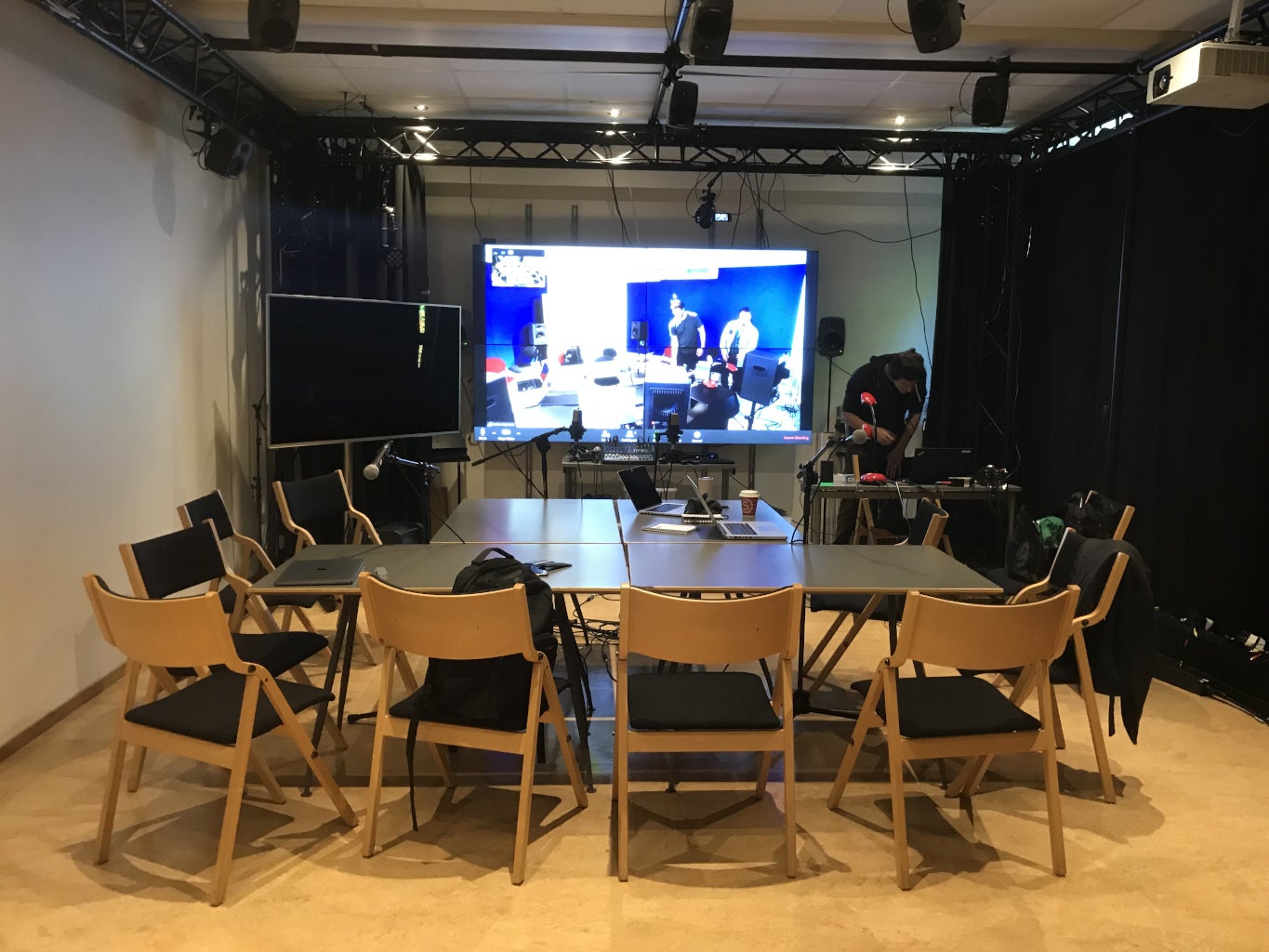
The set up is two condenser mics (AKG C414) and two dynamic (Shure SM58). After some experimentation and with Jorgen and Sepir sound checking from the other side, we found that the condenser mics were better positioned at the front of the class near the screen, and the dynamic mics placed for the students at the back. We tested this by moving to each seat in the class and testing by speaking and whispering into the mics, and asking Trondheim how clearly we could be heard.
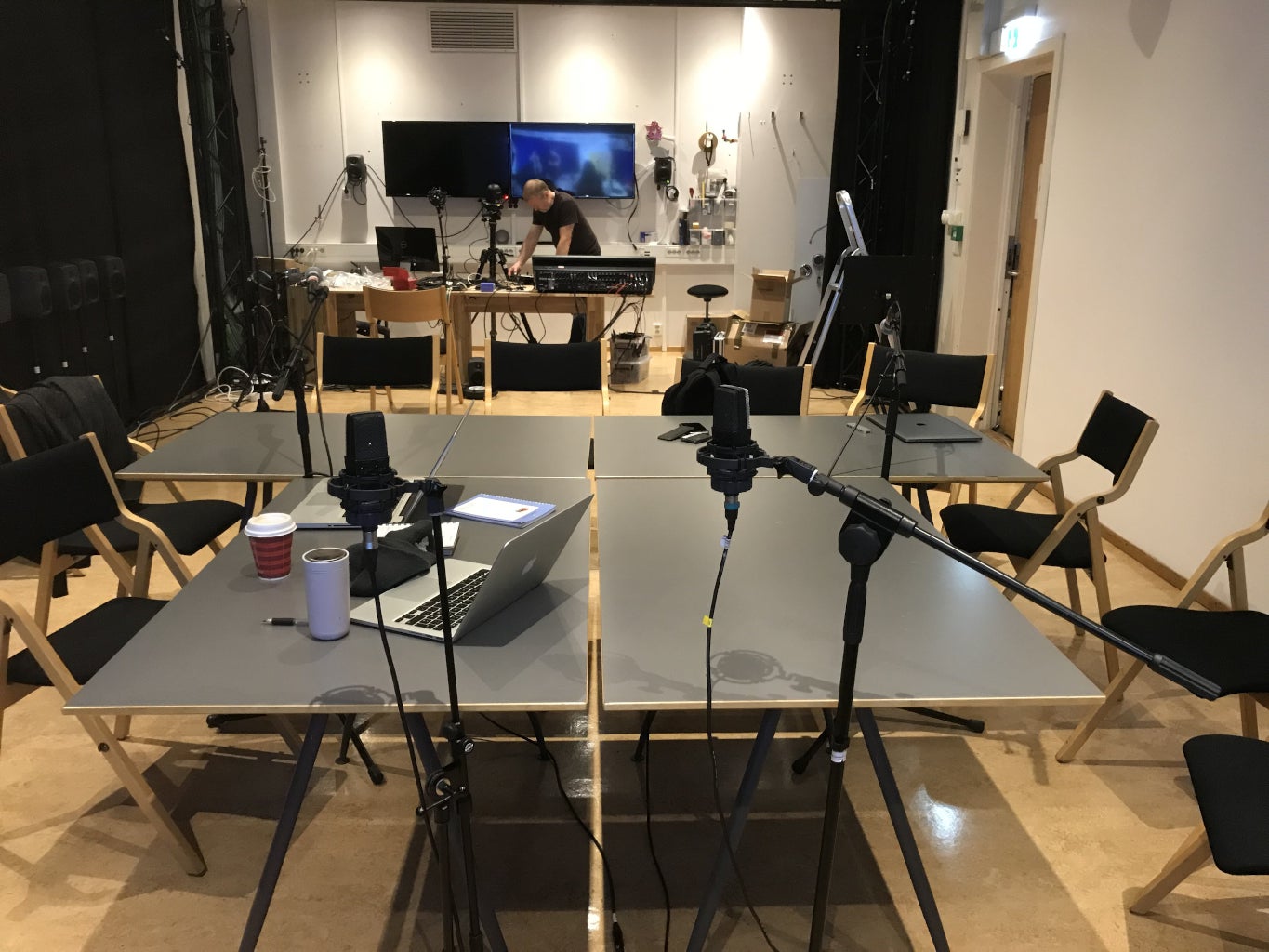
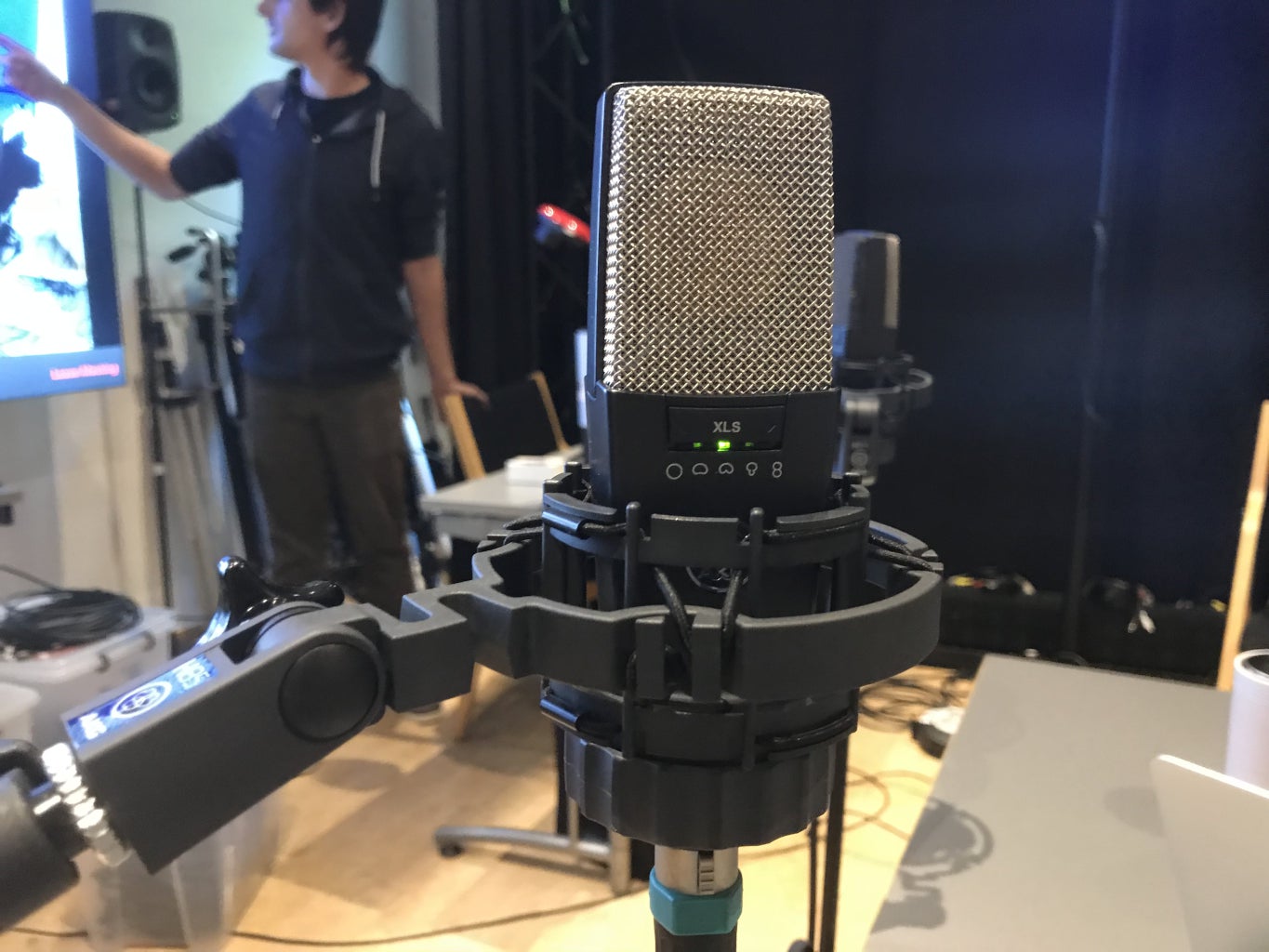
We found the cardioid setting on the AKG was the clearest for this classroom setting. The dynamic mics are on stands, which can be moved around both the back tables. We suggest that if you can move the mice closer to you when you are speaking through the portal from the back tables - especially if your voice is a little quieter! This works practically, but spoils some of the immersion potential of the portal, you are very aware of the separation when you have to consciously move the mic each time someone at the back wants to communicate.
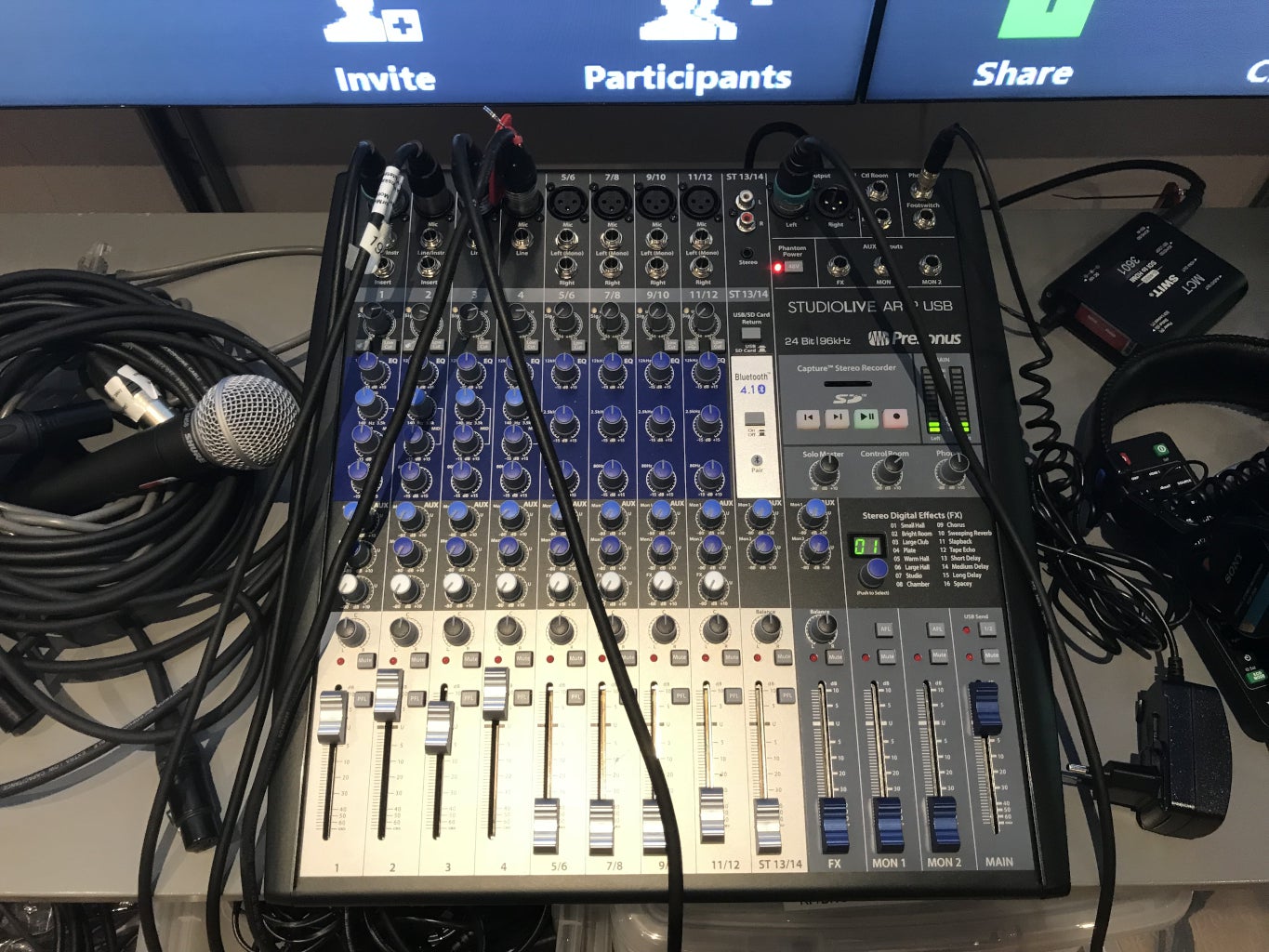
Preparing Portal for Studio Production
Due to a misunderstanding we started preparing the Portal-room for the MCT4000, studio production course, by setting up cameras showing the tutor and the audio mixer for Thursday. The setting was to be 1 canon camera pointing towards tutor, full body shot - and a Panasonic remote controlled PTZ-camera (Pan-Tilt-Zoom) covering the mixer. We got as far as to connect the PTZ-camera to the remote control, then having to initialize the camera software online. The setup was taken down when we learned that it was not necessary for the studio production course.
And Lastly….
MCT opening ceromony was reported on Krono online. includes interview with group A’s Juno & Sam
